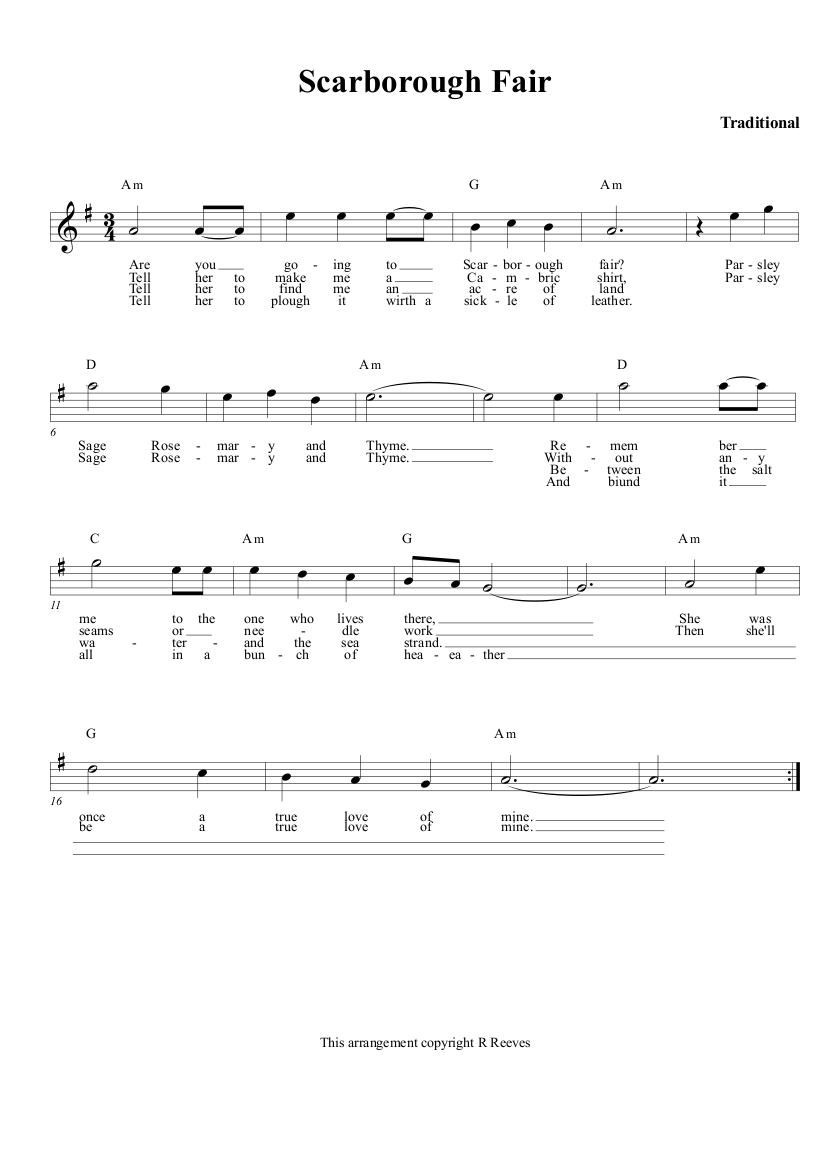The subject if this post is how to solo over the traditional tune Scarborough Fair. My arrangement of the melody puts it into the Dorian Mode of the G major scale. That is the key is A minor with a major sixth (F#) instead of the usual minor sixth (F). Note that the G is not sharpened by an accidental as it would be in the A harmonic minor scale. A simple way to think of it is as the notes of the G major scale, but with a root note of A instead of G. The tune finishes on its root of A.
The approach is simple: play using the notes of the G major scale throughout! If you are familiar with the arpeggios for the chords used (Am, G, D, and C) your solo will sound more convincing if you outline the changing chords with notes from their arpeggios. Otherwise, use your ear to pick out the notes that go with each change of chord. Use phrasing and plenty of space.
Here is my chart of the arrangement. One of the differences between written music in classical style and the jazz tradition is that classical music is meant to be played exactly as written on the printed page. However in Jazz, the solo performer often takes a lot of leeway with the written tune, adjusting the timing and feel, and even adding or subtracting notes in order to convey their artistic vision of the tune. You can observe this with the simple chart – if played exactly as written, many of the nice nuances of the original folk song will be missed. However the chart in this case gives enough of the tune for you to interpret it in your own style.

An interesting feature of the arrangement is that the tune is 19 bars long: a 4 bar phrase followed by 3 five bar phrases, which contributes to it’s haunting quality.
Here is a practice track to hone your skills. The melody is played at the beginning and the end, with 4 repeats in between for you to practice your solo.
Here is the rhythm track again with my solo:
Enjoy!
